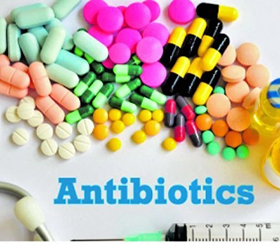
While antibiotics have been lifesaving, the over-prescription of antibiotics has sparked the evolution of drug-resistant strains of life threatening bacteria, resulting in tens of thousands of deaths each year. The US Centers for Disease Control estimate that up to 50% of antibiotics prescribed in the US are unnecessary. Unfortunately, the use of antibiotics is often prescribed for those groups who are more vulnerable to dysbiosis, including infants born via C-section and in those born preterm, compared to term infants born vaginally, potentially compounding the problems. Micro-organisms such as bacteria, fungi, viruses, and parasites cause many of the world’s diseases, yet only bacterial infections are usually susceptible to treatment with commonly prescribed antibiotics.
However, more subtle side effects of antibiotics on the gut microbiome are only just beginning to be discovered. Broad-spectrum antibiotics can impact up to 30% of the bacteria among the human microbiota, resulting in severe loss of species and function and begins immediately following antibiotic administration. The effects can sometimes last for years after its cessation, and may also lead to the total extinction of some beneficial microbial species. As few as three days of treatment with the most commonly prescribed antibiotics can result in sustained reductions in microbiota diversity. A typical two-week course of high-dose antibiotic treatment, as might be used for an ear infection, can wipe out most of the beneficial gut microbes.
These antibiotic-induced changes in the microbiota have been linked to many disease states including increased infections, metabolic disturbances, obesity, autoimmunity, and mental health conditions. Common outcomes of antibiotics the antibiotic-disturbed gut microbiota are diarrhea and infections with Clostridium difficile, particularly in infants.
Early life exposure
Early life exposure to antibiotics presents the greatest risk of long-term damage to the gut microbiota and the more you take, the worse it is. In young children, antibiotics may change the development of the “adult” microbiota, and not allow its normal maturation. It has also been hypothesized to cause a delay in microbial maturation from six to 12 months after birth. Early life exposure is also associated with numerous diseases later in life including IBD, obesity, and asthma, as well as the development of immune-mediated metabolic and neurological diseases.
Allergies and asthma
In a meta-analysis of eight studies including 12,082 subjects, antibiotic use in the first year of life was significantly associated with two-fold (200%) increased chance of the child having asthma. One study reported the use of antibiotics in newborns increased the risk of developing asthma by 24 times. Probiotics during the neonatal period were protective and reduced the risk by as much as 86% for childhood asthma for kids at risk. Studies of mice treated with antibiotics in early life revealed altered microbial populations within the gut microbiota and consequently increased the susceptibility of these mice to asthma.
Mental Health
Antibiotic use has also been shown to have long-term effects on brain neurochemistry and behavior. Such use is known to alter the intestinal microbiome with subsequent changes in microbiota to gut-brain axis and result in poorer neuro-cognitive outcomes later in life.
Even treatment with a single antibiotic course was associated with a 25% higher risk for depression and the risk increased with recurrent antibiotic exposures to 40% for two to five courses and 56% for more than five courses of antibiotics. The higher the rates of antibiotic use, the higher the rates of depression. Animal studies have shown that high doses of a cocktail of antibiotics induced lasting changes in gut microbiota associated with behavioural alterations.
Metabolic illness
Animal studies of early life exposure to antibiotics show lasting immune and metabolic consequences. Administration of low doses of penicillin to mice early in life increases the risk of weight gain and obesity and promotes lipid accumulation by altering the gut microbiota. Mice treated continuously with low-dose penicillin from one week before birth until weaning exhibited higher body weight and fat mass in adulthood, although the microbial structure returned to normal after four weeks of antibiotics cessation. There is also evidence of antibiotics playing a role in the development of IBD in children and that antibiotic usage during the first year of life was more common in those diagnosed with IBD later in life.
Antibiotics and pregnancy
In human studies, mother’s use of antibiotics during pregnancy is consistently associated with cow’s milk allergy, wheeze, asthma, and atopic dermatitis, with the strongest association for antibiotic use in the third trimester of pregnancy. A study of 306 children with asthma showed that mother’s use of antibiotics during pregnancy increased the risk by a whopping four times (390%). Low-dose penicillin in late pregnancy and early postnatal life in the offspring of mice resulted in lasting effects on gut microbiota, increased brain inflammation, and resulted in anxiety-like behaviours and displays of aggression. Similar results have been shown for antibiotic exposure through breastfeeding.